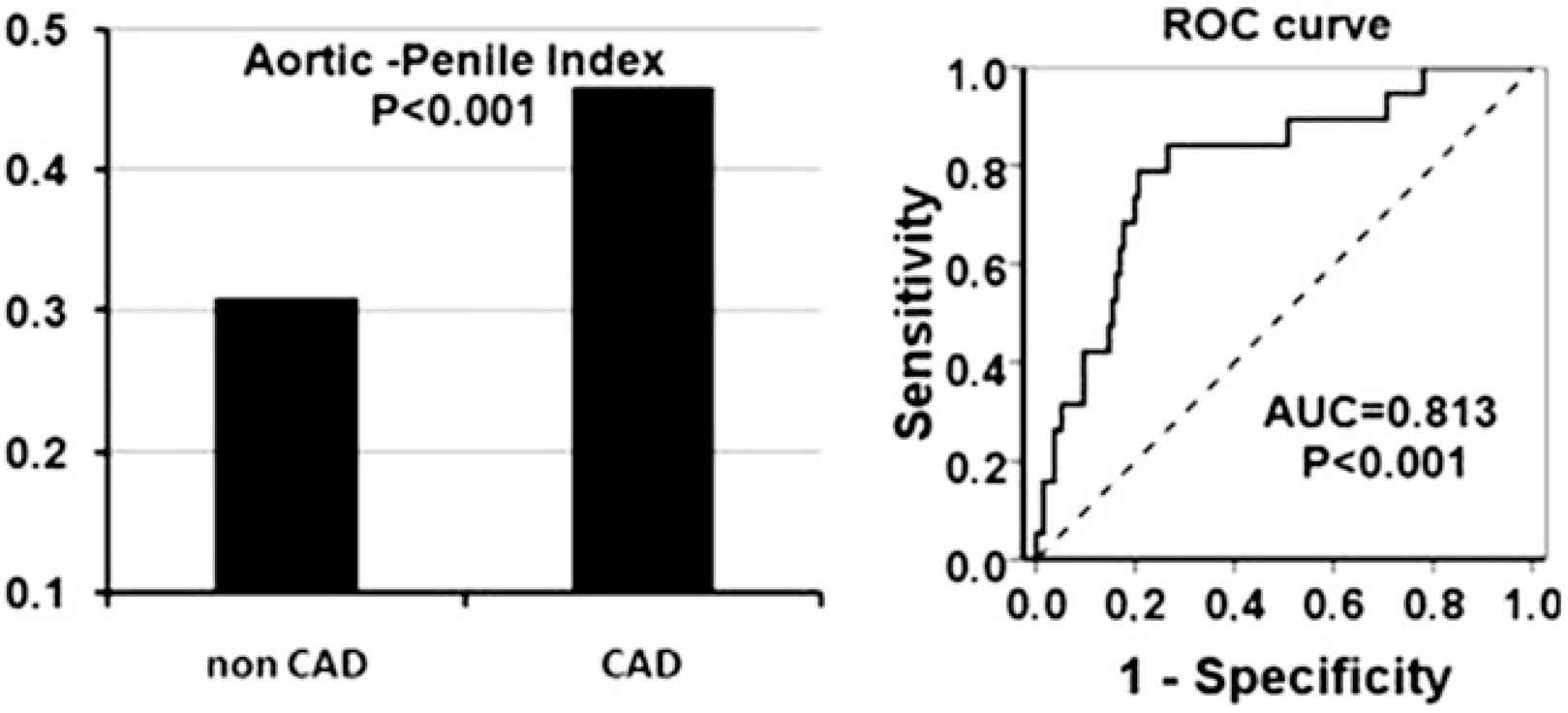P5.09 AORTIC/PENILE INDEX IS A MARKER OF OCCULT CORONARY ARTERY DISEASE IN MIDDLE-AGED HYPERTENSIVE PATIENTS WITH ERECTILE DYSFUNCTION
- DOI
- 10.1016/j.artres.2011.10.066How to use a DOI?
- Open Access
- This is an open access article distributed under the CC BY-NC license.
Background: It has been reported that there is a strict correlation between hypertension, erectile dysfunction (ED) and coronary artery disease (CAD), but the importance of an index to predict CAD in hypertensive ED patients needs to be addressed.
Methods: 155 consecutive asymptomatic non-diabetic treated hypertensive ED patients (40–60 y/o) were evaluated using exercise treadmill test and stress echocardiography. Men with positive one or both of the two tests were referred for coronary angiography in order to document CAD. All patients underwent penile Doppler ultrasonography and carotid–femoral pulse wave velocity (PWV) evaluation. Reduced penile peak systolic velocity (PSV) is associated impaired penile arterial function and increased atherosclerotic burden. Aortic/penile index (API) was developed to describe the severity of extracoronary vascular dysfunction with the formula: API=PWV/PSV.
Results: Coronary angiography revealed stenotic lesions in 19 (12%) patients. The prevalence of Grade II/III hypertension was not different between CAD patients and subjects without CAD. CAD patients compared to subjects without CAD had higher PWV (9.3 vs 8.6 m/s, P<0.01), lower PSV (23 vs 30 cm/s, P<0.01) and a higher API (left figure). Right figure illustrates the diagnostic performance of API for CAD prediction. Further analysis revealed that the area under the curve (AUC) for API was significantly greater than the AUC for either parameter alone (all P<0.05).
Conclusions: API allows an accurate interpretation for the interrelationships between hypertension, ED and CAD and predicts CAD with high values of both sensitivity and specificity. Our findings allow identification of hypertensive men who might warrant more intensive follow-up.

Cite this article
TY - JOUR AU - N. Ioakeimidis AU - C. Vlachopoulos AU - D. Terentes-Printzios AU - P. Xaplanteris AU - E. Christoforatou AU - P. Pietri AU - D. Kardara AU - A. Synodinos AU - K. Aznaouridis AU - C. Stefanadis PY - 2011 DA - 2011/11/29 TI - P5.09 AORTIC/PENILE INDEX IS A MARKER OF OCCULT CORONARY ARTERY DISEASE IN MIDDLE-AGED HYPERTENSIVE PATIENTS WITH ERECTILE DYSFUNCTION JO - Artery Research SP - 166 EP - 166 VL - 5 IS - 4 SN - 1876-4401 UR - https://doi.org/10.1016/j.artres.2011.10.066 DO - 10.1016/j.artres.2011.10.066 ID - Ioakeimidis2011 ER -
